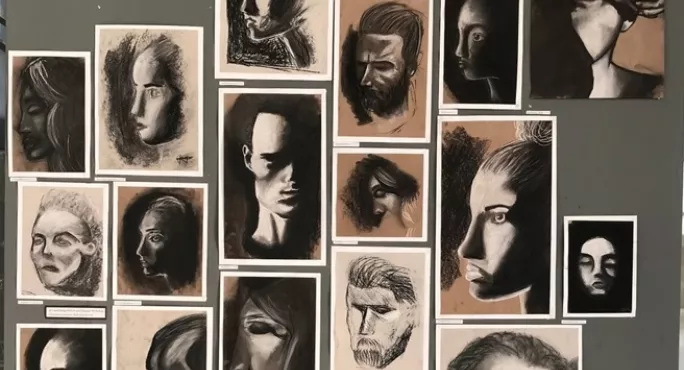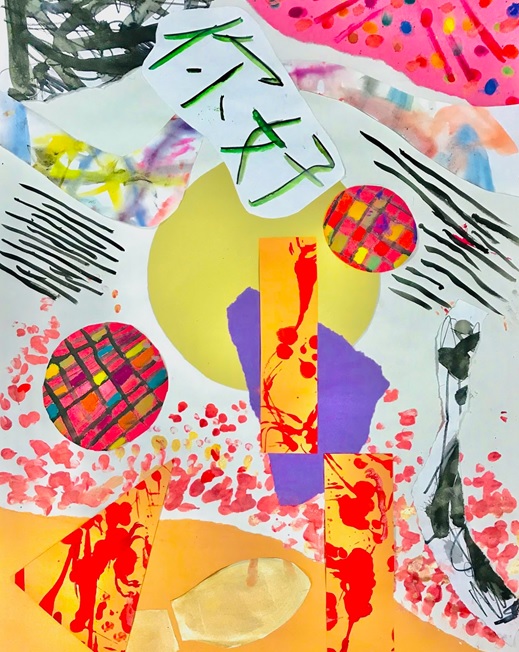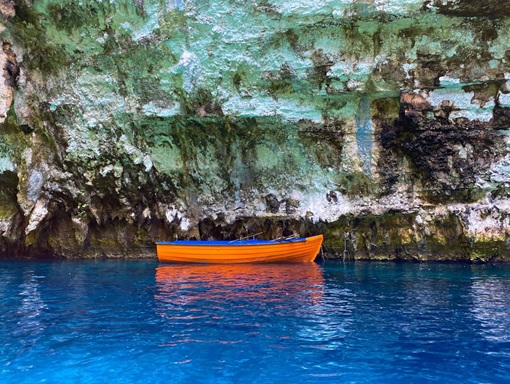Why I launched an online art magazine for our school

Since joining the International English School of Castellon, Spain, last year I have been trying to gradually build the art department - not easy when I am the sole secondary art teacher.
One challenge was how to inspire more children to be interested in art - in all its form - beyond the allotted subject time.
So in October this year I established a Talented and Gifted group within art, called TAG.
Raising the profile of art in school
To do this, I thought of students across secondary whose work is consistently of advanced quality for their age range. This includes in technical skills, subject understanding and work with independence.
After compiling a list of these students, I sent a letter to parents explaining that their child had been selected for the group and to also inform them about the organised after-school workshops they were invited to attend, which would be happening once a month.
The aim of the workshops is to expose students to concepts, materials and processes that we may not have the opportunity to cover in lessons, particularly at the moment, when having large numbers of students in a class is not possible.
Each session focuses on different skills, and they are taught techniques that enable them to produce impressive pieces, in a period of two hours.
In our first workshop, for example, students learned how to produce chiaroscuro portraits using chalk and charcoal on dark sugar paper. Students worked from a selection of black and white photographs that I had prepared.
The results were varied and highly effective (see image above) and after showing our headmaster, I then identified an area in the foyer of our school that would be the perfect spot to show this work.
Mixing it up
In the second session, we produced large-scale, mixed media, abstract decorative pieces, with a focus on making them colourful, bold and contemporary.
Again, examples and demonstrations were given about the process of building a variety of collage material, different mark-making and pattern, before selecting which sections to use and considering a composition.

Valeria, Genoveva and Li, all Year 7
This activity was partly chosen, again, because of the outcome’s striking display potential.
However, while it was great to showcase these works in school, I wanted to take this appreciation further to the wide world.
Going digital
To do this I created a Google site called Art Space - a sort of online art magazine for our school that would act as a showcase for excellent work, but also to share resources, news stories and information about the local art scene.
And in conjunction with this, I set up a second site to host a photography competition for secondary students, allowing them to submit two images into two (of eight) different categories, including The Ordinary and The Everyday, Nature and The Inspirational.

Photo by Elena, Year 10
Building websites is not something I have a huge amount of experience with but I discovered that our school’s use of Google Drive came with a very easy-to-use website builder.
This allowed me to create the two websites with relative ease.
Spreading the word
Once they were live, I shared the links widely - and often - in classroom feeds and staff bulletins and more, and there was a great response from all, with the students very excited and proud to see their own photographs shared on the websites.
The quality of the entries to the competition was really high and you can tell students really thought about their photographs and spent a lot of time setting up shots and using various techniques.
The school management was extremely supportive of the competition and very happy to help judge and reward its winners in a presentation ceremony.
Each of the sites has also fed into our school´s wider online presence, through documentation of the workshops, competitions and websites being shared on the school´s Facebook page and other public forums.
Meanwhile, Art Space continues to be updated each week, with new student work on show, such as watercolours, mixed-media work, digital collages, drawings and paintings, as well as other content such as news stories about art, activities, resources and places to visit.
We also plan to interview and select students with an interest in art, media, marketing or content to be the editors of the site.
We are interested in developing further competitions, across the curriculum, through the use of Google Sites, given the success of the photography competition.
Community connections
This push to get our students’ art out into the world means there is also real potential for our school to become rooted in the community as a creative hub - something I have seen work wonders in a previous role, where I formed a relationship with a local gallery.
Through this partnership, we had an exchange of visiting artists and exhibitions, in our school and in their gallery. As such, I am keeping a close eye on new creative businesses that open in our city and talking to the owners to determine what they could offer our students.
All in all, by providing a dedicated space to host their creative efforts that goes beyond the school - digitally and physically - we are starting to make good on that mission to boost the presence the art department, and hook pupils into the wonders of creativity.
Lewis Mason is an art and music teacher at The English International School of Castellón, and has taught internationally for two years
You need a Tes subscription to read this article
Subscribe now to read this article and get other subscriber-only content:
- Unlimited access to all Tes magazine content
- Exclusive subscriber-only stories
- Award-winning email newsletters
Already a subscriber? Log in
You need a subscription to read this article
Subscribe now to read this article and get other subscriber-only content, including:
- Unlimited access to all Tes magazine content
- Exclusive subscriber-only stories
- Award-winning email newsletters